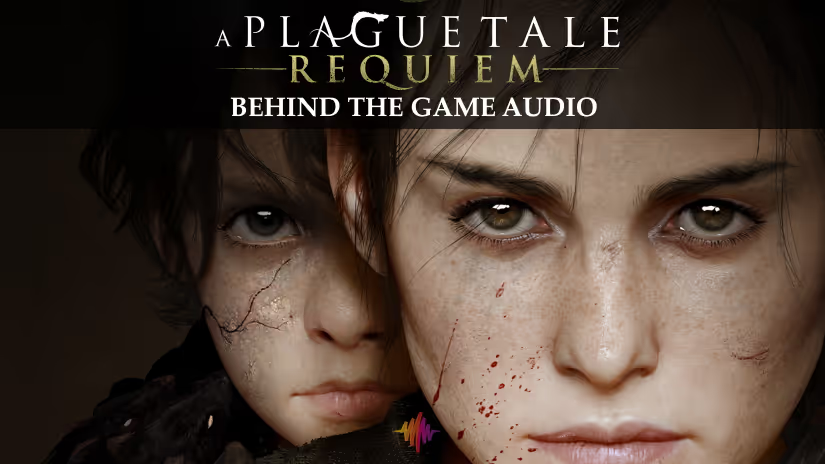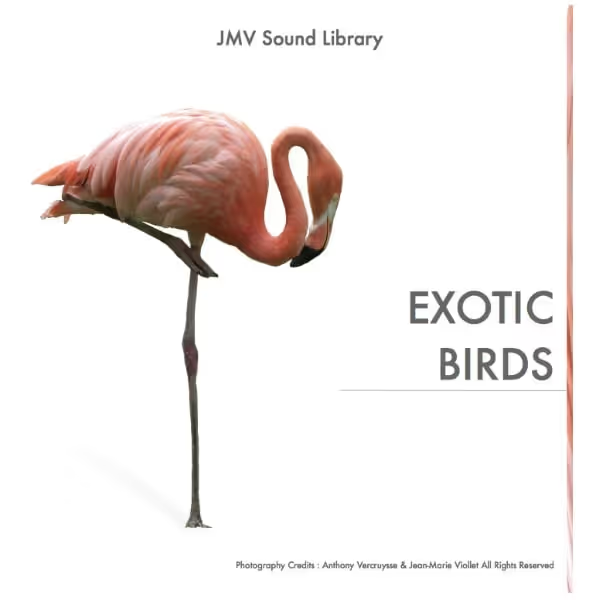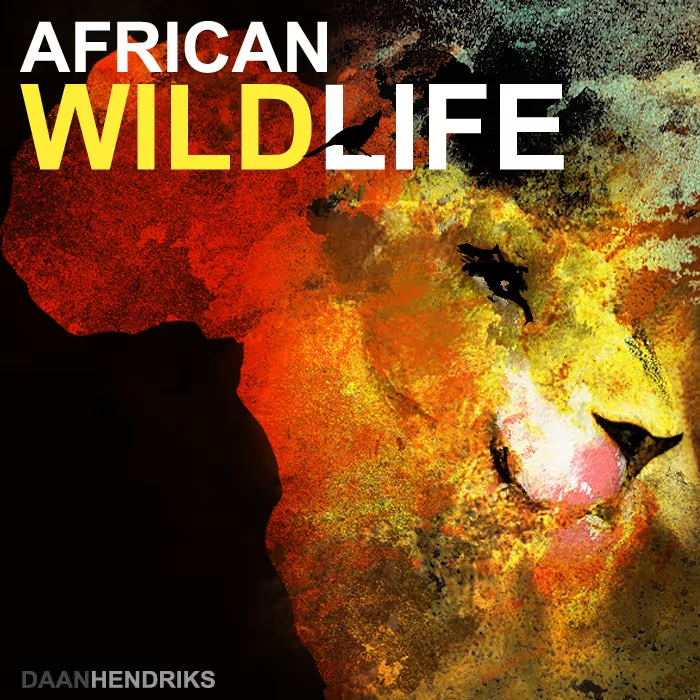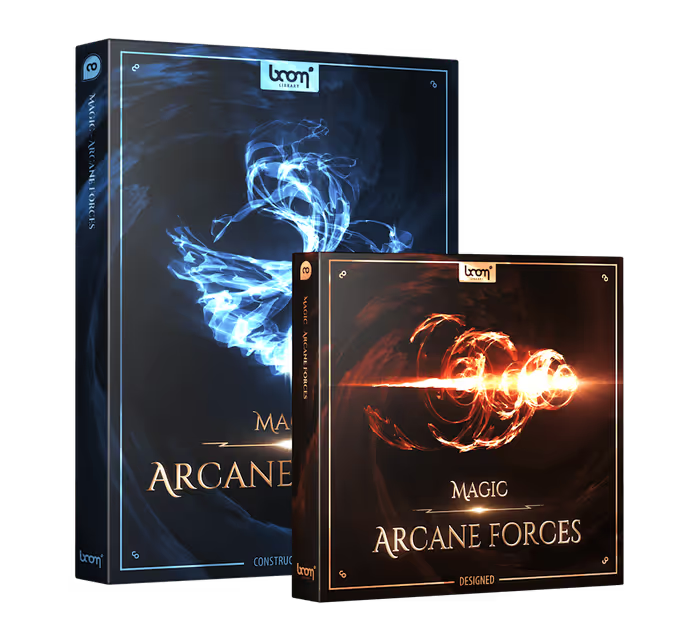Here, Asobo Audio Director Aurélien Piters discusses the sonic differences in both games, designing spatialized audio for next-gen systems, creating waves of rats, developing a time-saving approach to foley implementation, designing the sound of Hugo's 'Echo' and 'Imperium' abilities, simplifying the mix to maximize emotional impact, and more!
A Plague Tale: Requiem is Asobo Studio‘s first sequel game. So naturally, the question of reusing elements came up. But with so much difference between Requiem and the previous release A Plague Tale: Innocence it was nearly a moot point. Even the rats – a major part of the storyline, and of course, a signature sound for the game – have increased significantly in number so therefore needed a sound overhaul.
In addition, Requiem was designed for next-gen systems with all the upgrades that provides for the game sound team, such as increased CPU power for spatialized audio, more sound layers, and dynamic in-game processing.
Here, Asobo Studio Audio Director Aurélien Piters talks about the sonic difference between Innocence and Requiem, creating new sounds for the rats, designing ambiences for the new locations like Provence, and creating the sound for Hugo’s special rat-ralated abilities “Echo” and “Imperium.” He talks about how he and his core sound team (senior sound designer Maxime Touchon and sound designer Damien Drouillard) were able to create and implement detailed foley in a time-efficient way. Piters also talks about taking advantage of all that the next-gen systems have to offer the sound team, like spatialized 3D sound, haptic feedback and the PS5’s DualSense controller audio, mixing in Dolby Atmos for Xbox Series X, and more!
A Plague Tale: Requiem – Launch Trailer
How does the sound of A Plague Tale: Requiem compare to A Plague Tale: Innocence? Were you able to reuse any assets from the first game? How were you able to improve the sound of this new game?
Aurélien Piters (AP): The soundscape in Requiem evolved naturally with the game’s evolution, and with the characters’ evolution. Amicia changed a lot from the first one.
Also, Requiem doesn’t take place in Guyenne anymore. It’s now set in the southeast of France. So, the soundscape uses the natural sound signatures of Provence, for example, the cicadas.
Requiem is bigger than Innocence. The environments are more open and colorful compared to Innocence, which was really dark and suffocating. So the contrast between the beauty of the environments and the brutality of what is happening on screen is interesting. That’s reflected in the audio. We have all these sounds of violence – Amicia had to become a fighter and she has to kill people – and then at the same time, we have the beauty of Provence. The environment is gorgeous. This contrast is interesting for the visual and the sound.
…the contrast between the beauty of the environments and the brutality of what is happening on screen is interesting.
It was natural for us to follow the characters’ evolution through sound. We did have some questions for sound and that went for the music, too. Like, do we keep the same elements? You have new characters, new situations, and new content for the game. So we wanted to support that.
It was the first time we were doing a sequel, so we did have this question of what to keep and what to change. Signature sounds – like the rats – we can’t just throw away because the players are used to them and they are part of the DNA of the game.
Another thing to consider is that Requiem was created for only next-gen systems. We started the game 3 years ago and the PS5 and the Xbox Series X weren’t out, but we knew we wanted to do a lot with the increased CPU on the sound side. We wanted to step up the audio, and utilize the game’s geometry for the reverb, occlusion, and audio path finding. These were new tools that we didn’t have on the first one. They really bring depth to the sounds and the voiceovers. It gives a sense of space and depth to the characters’ voices, and to the environments. You know where you are, and where others are in relation to you, just from the voices. I’m really into reverbs and real-time reverberation. That brings so much to the game. It’s connected to the environment and we spent a lot of time tweaking the reverbs and editing the space and geometries.
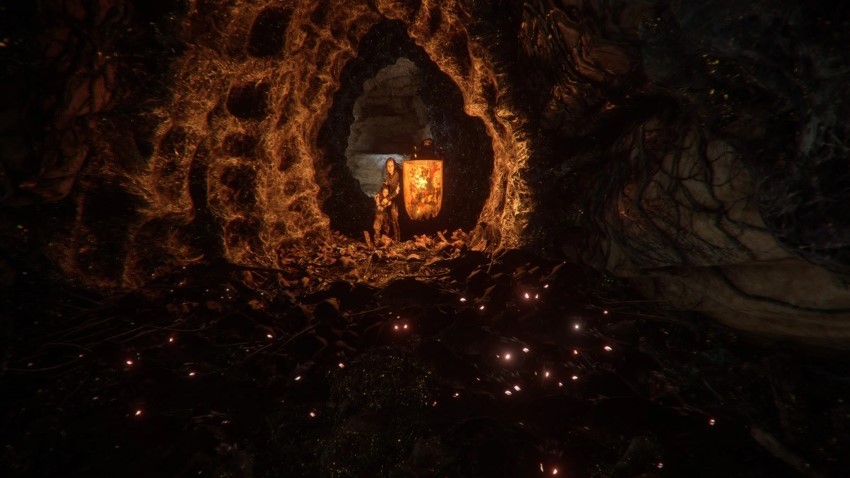
Rats are a big part of the storyline, and Requiem sees a huge increase in the number of rats and how they move. Described as a ‘ tsunami of rats’ by Nicolas Bécavin in an interview for Xbox Wire, what did that mean for your sound work on the rats? What went into their sound? How did you increase/decrease the sound of the rat swarm in-game to match the visuals?
AP: For the rats in Requiem, the sound evolution is connected to the low end. We went from 5,000 rats in Innocence to 300,000 rats in Requiem. So it was a massive avalanche of rats in this game.
In Innocence, we had a squeaking sound that was organic and disgusting. But now we have 300,000 rats, and so as a natural following of what’s going on on-screen, there is a lot of bass rumble. We also tried to give a disgusting feeling to the rats in Requiem by adding some squish and liquid layers.
…we have 300,000 rats, and so as a natural following of what’s going on on-screen, there is a lot of bass rumble.
Another cool thing about the next-gen systems is that there is so much power, and therefore, so much possibility. For Innocence, we had to bake sounds in the rat system to avoid using too many voices, but we didn’t have to do that for the PS5 and Series X. Instead, we were able to take a full granular approach. It was like a granular synth connected to the rats’ “state” machine. So, we have the state of rats – angry, eating, or more passive (idle) – and when they see prey, that changes into attack mode. And the sound evolves directly. All the rat sounds are very short, and they blend together. All the different layers are playing randomly with variation in real-time. That’s one of the cool things we were able to do with Requiem thanks to next-gen.
It was quite hard to work with rat floods because you never know where they’re going to go. The rats are really behaving like a fluid and we even had some issues during the development where the rats were spreading through holes in the levels. So we had that issue with sound, too. You wonder why the rats are acting that way visually, and the sound is reflecting the rats’ movement and state. We did a lot of testing to make sure we were using sounds that worked in this system, and that we weren’t using too many voices. We had gone full-granular, and at one point and it was just too much. So, we were able to go full-granular but we still had to pay attention to the rats.
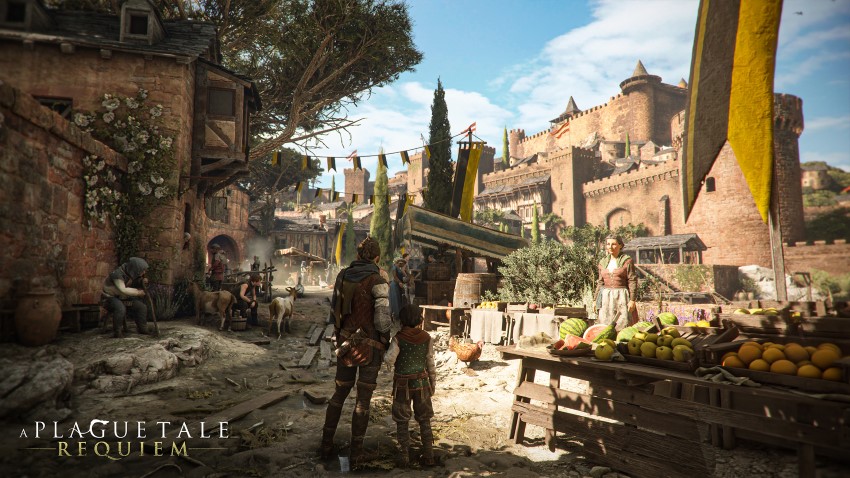
Requiem takes the player to new locations, like Provence, I love the sound of the marketplace there. It’s probably the richest and most beautiful ambience in the game. There’s also La Cuna, and Marseille. What were some key sounds for these locations that make each feel distinct?
AP: We knew we had to make this crowded marketplace in Provence that is unlike anything we did for Innocence because it would have been too costly for the CPU. So, we knew we had to make this crowd system and we used the same system we used for the rats. It’s funny, but it’s the same behavior. If you have three people on one side, it’s creating one emitter for the three people. If you have ten people, it’s creating one emitter for ten people. But you have the information about how many people there are for that one emitter.
We did a recording session with our team – recording three people doing some walla, five people, and ten people. We recorded the women separately from the men so we could make that distinction in the crowd audio to fit the visuals. So, that’s how we did the market – we recorded the sound of the people at Asobo Studio.
Behind the score – with Olivier Deriviere:
…we had to make this crowd system and we used the same system we used for the rats.
I’d say that besides the market, the signature sound of Provence is the cicadas. We have some people on our team from the southeast of France, and we so had some expert advice from them on the cicada sounds. They were able to guide our work on that, to help us make it believable – for instance, when you would hear the cicadas, and when you wouldn’t hear them. At one point, our work was all about cicadas. We fully spatialized the cicadas, so if you listen back with 3D audio, you will hear them above, behind, and all around. It’s really fun.
 Tesla Model X 2015 electric full size crossover SUV sport utility vehicleKrampfstadt Studio65,00 $32,00 $51% OFF
Tesla Model X 2015 electric full size crossover SUV sport utility vehicleKrampfstadt Studio65,00 $32,00 $51% OFF
La Cuna is really important to the narrative. Of course, we wanted to have a sonic signature and that’s the music. That’s conveying the feeling of the island. Composer Olivier Deriviere and Eric-Maria Couturier (the cellist on the score) were using natural harmonics to make some textural elements. At one point, Olivier sent me some samples for La Cuna, and it sounded crazy. When you hear these textures, you think “sound design.” It’s not music so much as these insane textural sounds. So when you’re on La Cuna, you instantly know that’s the call of the island. These textural elements are the signature sound of the island.
We have a generative wind sound system that is connected to the in-game wind.
On the sound side, we had some really fun wind systems when you’re close to the coast. We have a generative wind sound system that is connected to the in-game wind. So the wind in the game is making the trees move visually, and there’s a specific direction to the wind so if you turn around, you will feel the wind blowing in your ear. It makes that low-end hiss type of sound, and it changes as you move your head. That was a way to make the soundscape evolve with the camera. We didn’t want static ambiences. We tried to make the soundscape evolve with the wind, and with the random emitters. That’s a good way to connect the sound to the visuals and to make the soundscape evolve.
Hear the A Plague Tale: Requiem symphony in concert here
The sound of Marseille is more about the Nebula. When you get to Marseille, you’re close to the end of the game, and at this point, it’s more about the emotion. It’s so rich and powerful. We didn’t have a specific signature sound element for Marseille, it was more about the music and what Amicia was feeling. The Nebula is the main aspect of that location.
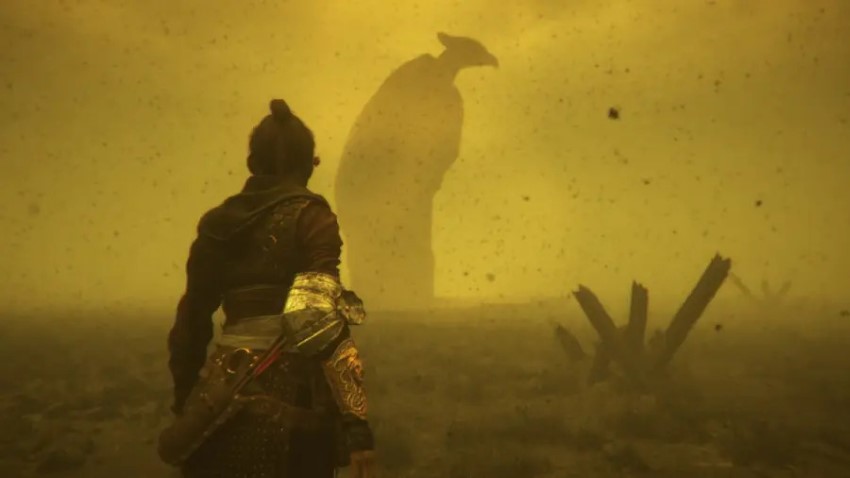
What was your approach to sound inside the Nebula? You mentioned your love of reverbs, and there’s really cool processing (reverbs and delays) on the voices in here…
AP: Inside the Nebula, it’s all about Hugo. At one point, he says, “All natural law stops here.” He’s talking to Amicia, but his voice is all around you. You don’t know where he’s at as he’s talking.
I created a weird reverb that is totally unnatural.
The visual colors of the game have changed here, also. And we reflected that in the sound. I created a weird reverb that is totally unnatural. We removed nearly all the sounds, even the footsteps. You feel like you’re in space, or in a dream. Is it the polluted air that Amicia breathed? Is she dreaming? We don’t know. So we wanted to focus on creating a crazy space. It’s really empty. It’s all about the voice acting here, and the actors were crazy good. We didn’t need to add much at this point; it was all about the acting and the music.
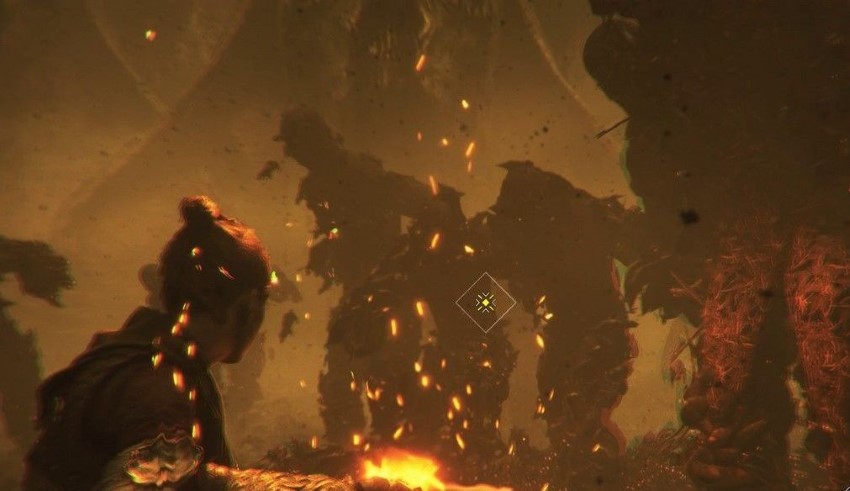
What went into the sound of the rat monsters inside the Nebula?
AP: That was created using my voice for when they’re waking up. We only wanted to give some subtle feedback to the player as this section was mainly focusing on the music and the actors, so there are only movement sounds and footsteps. This was definitely one of the most challenging levels, though.
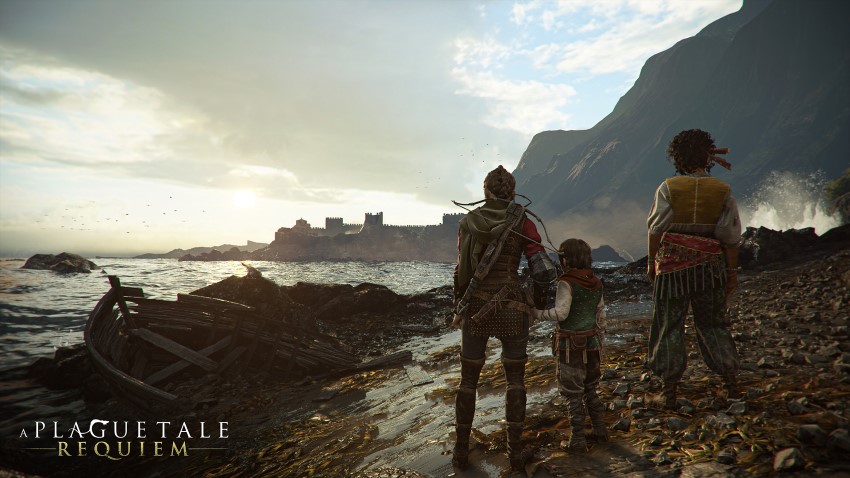
A Plague Tale is a mix of natural and rustic sounds (stone, wood, fire, metal, etc). There are also some supernatural/magical elements, such as the Nebula, but it’s all based in the natural world. What were some of your sources for the natural/rustic sounds? (Library, custom recordings, foley?)
AP: It’s a blend of the three and dependent on what we needed. We never went too crazy on the “magical” side. We always kept the sound organic and true-to-life, to stay connected to the game.
…it can still be hard to find exactly what you need, especially for foley.
There are so many great sound libraries today. Every studio has (or has access to) all the same tools. It’s really how you use them, and what you do with the library sounds. Ten or twelve years ago, there weren’t so many great libraries. But now, it’s infinite. It’s crazy how many great recordings you can buy on A Sound Effect or other sound library sites. It’s a good time to be a sound designer!
But, it can still be hard to find exactly what you need, especially for foley. It’s just easier to grab a mic and record what you need. That’s what we do most of the time if it’s a sound we know we won’t find in a library – it’s very specific in terms of timing or distance. So we use a blend of all three: library sounds, custom recordings, and foley.
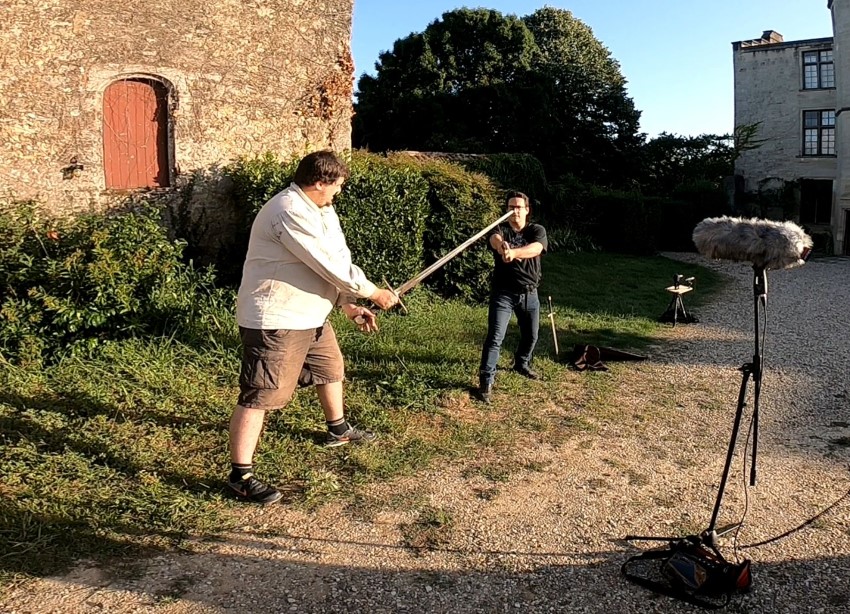
Can you talk about the foley work in the game? Amica’s movements are beautifully reflected in her footsteps over a variety of surfaces, from the resonance of the wooden walkways and ladders to the crunch of the gravel and dirt on pathways to the swish of the tall grass. You hear every bit of that. Did that require a lot of foley and implementation? How did you make this easier to manage?
AP: With foley, it’s all about giving presence to Amicia and the other characters. We used a hybrid approach for foley. We have some linear sounds attached to the animations, like when she’s climbing a ladder or over a wall or window ledge.
On top of that, we have systemic sounds that are controlled by the bone movements. At any time, we know the speed and acceleration of every bone. We have a calculation that generates a value for the speed and acceleration and we created some foley loops that are connected to the movements. So if Amicia is moving an arm, we have the right sound to match that movement precisely.
We have a calculation that generates a value for the speed and acceleration and we created some foley loops that are connected to the movements.
This approach saved us a lot of time. Otherwise, we’d need to tag all the animations. We’re a small team so we have to be very time-smart. The foley system is something I talked about in my talk at GDC in 2020.
In this game, we went a bit further. Not only do we know the speed and acceleration, but we know the force of the footsteps. We can use all these values to tweak and edit the sounds in real time.
Every character in the game has its system, so we created a sonic foley signature for each one. For example, Sophia has on jewelry and a necklace, so when she moves we need to hear that clink and clatter; Amicia has a crossbow; Arnaud has his shield. But many characters share the same sounds. Obviously, we didn’t create footsteps for every character. Most of the time, we did share general foley sounds. But for each character, we created signature foley sounds to help the player know which character is moving on-screen.
With next-gen, we can add so many layers. It’s crazy the number of sounds the next-gen systems can handle.
So, it was all about finding the important sounds and then mixing them at the right level to fit the context of the moment. If Amicia is walking, we need to hear a lower sound with more bass, and when she’s running, the volume is changing and the pitch is changing. With next-gen, we can add so many layers. It’s crazy the number of sounds the next-gen systems can handle.
The goal was to be able to recognize a character just by their foley. That was easier to accomplish for certain characters, like Sophia. She has so much jewelry.
We knew we’d have a small team from the start, and we knew that we’d need to be smart about integration. We can’t do everything, and it’s smart to reuse and share sounds. The foley system will add variation based on the values of speed, acceleration, and force. So our focus was on the signature sounds we created for each character. Those are what really help to distinguish each character.
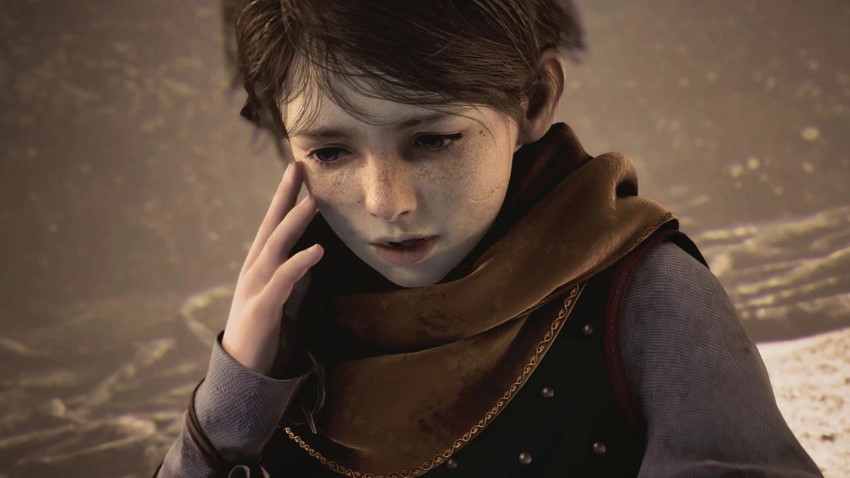
Hugo can use an ability named “Echo” to reveal the locations of enemies through walls. What went into the creation of that ability sound-wise?
AP: That’s a cool ability that is connected to the narrative and Hugo’s story. The sound for the Echo ability is a blend of music design and sound design. We don’t have music just to have music. We have to have meaning behind the music, and the soundscape, too.
The sound for the Echo ability is a blend of music design and sound design.
When Hugo is using this power, he’s connecting to the rats. This ability allows him to be one with the rats, so when you’re using Echo, you hear the rat’s cello element. At the start of using this ability, you get a sense of well-being with the rats, so you hear major harmonies. As you continue to use the ability, Hugo suffers and so the cello texture changes to be more screechy and painful. The sound is more in line with the rat squeaks. It’s an evolution of the soundscape as you use the Echo ability.
What’s interesting about the audio on a gameplay level is when you use Echo, the ambiences get lower and you enter inside Hugo’s head. You get some “rat sense.” It was fun because we were imagining becoming rats and how that would sound. You hear the heartbeats of enemies, and also their breathing. It’s a cool way to detect enemies and give feedback for stealth.
After using the Echo ability, you progress to the second tier of Hugo’s power, Imperium (which controls the rats’ movement). The design team wanted to integrate this into the narrative of the game. You need to see where your enemies are for gameplay reasons, but we can’t just give Hugo the ability to see through walls. So, we used the rats as a way for Hugo to do that.
The PS5 DualSense is great for a sound designer because you have a lot of dynamics and a stereo field to play with in the gamepad.
We also integrated haptic feedback for this ability into the vibration of the controller; you are able to feel the heartbeat of enemies and the movement of the rats in your hand. The PS5 DualSense is great for a sound designer because you have a lot of dynamics and a stereo field to play with in the gamepad. Sometimes with the DualSense, I felt like we could remove sounds from the soundscape and put them in the DualSense controller instead. You need to give feedback to the player to make them understand where the enemies are, but you can get a cleaner mix by sending sounds to the DualSense and adding vibrations. It was really cool to use this for Echo and Imperium.
[tweet_box]Designing Next-Gen Sound for ‘A Plague Tale: Requiem’ – with Audio Director Aurélien Piters [/tweet_box]
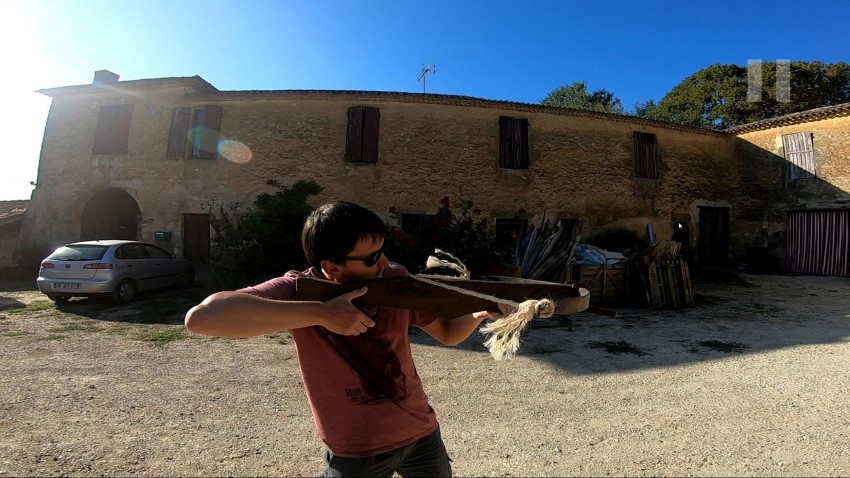
What was the most challenging Chapter for sound? Or, what Chapter are you most proud of sound-wise?
AP: The Nebula was really hard. We have very emotional levels toward the end of the game, especially if you’re attached to certain characters. The audio is really driving the emotion in these sequences and you can ruin that with a bad mix – if you have the wrong sound or if the music is too loud or too low. It’s really fragile. You want to keep the player in the experience. I remember taking a step back on certain scenes, coming back to it days or weeks later with fresh ears. Then it’s easier to know if you made the right choices.
The audio is really driving the emotion in these sequences and you can ruin that with a bad mix…
The challenge was to convey the right emotions in the mix, and not put in too much sound or too much music. Sometimes a thin layer of audio was enough for the sound design.
I’m really proud of the last chapter in the Nebula. I was really anxious about this level because there is action, some fantasy elements with the Nebula, and also deep emotion. I’m most proud of this chapter because emotion-wise, you have a lot.

What was your biggest technical challenge in terms of sound on Requiem?
AP: I would say shipping the game on different next-gen platforms. We were full next-gen so we had to learn how to make worlds in 3D audio on PS5, and Dolby Atmos on Xbox Series X.
You’re sending sound to the controller, so it’s really an audio feature.
There was the DualSense to learn, too. You’re sending sound to the controller, so it’s really an audio feature. It’s time-consuming to understand how that works and how to take advantage of next-gen for audio. You want to use it the right way.
At the time when the game is released, the consoles would have been out for two years so players will be used to these platforms. When a new console is created, it’s always hard to make sure that everything is working correctly.
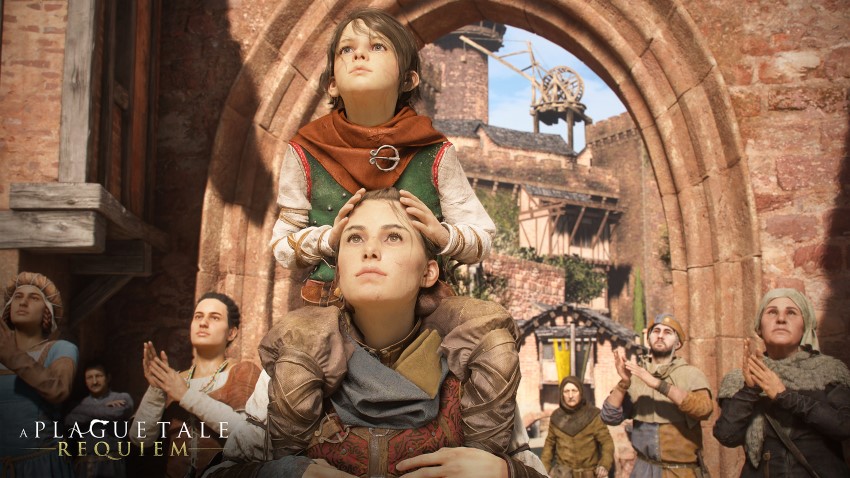
Requiem was created using a proprietary in-house engine called Zouna. What impact did that have on the sound?
AP: Innocence was also created using that engine. We’re using our Zouna engine and Wwise is integrated into our engine, so it was exactly the same formula as Innocence. Of course, we integrate the new Wwise features when those become available.
One new feature we integrated from Wwise was spatial audio, like the geometries, occlusion, and path finding.
Using Zouna, we have the total freedom to change our engine. So, if I need specific things in the sound engine, I can ask our great programmers at Asobo. One new feature we integrated from Wwise was spatial audio, like the geometries, occlusion, and path finding. Once we had it in our engine, we were able to have fun with it.
We all know the engine very well and we decide what we want to do or not in the engine. We have a team of programmers that created the engine 20 years ago, and they know it by heart. You always have someone to answer your questions because they created the engine.
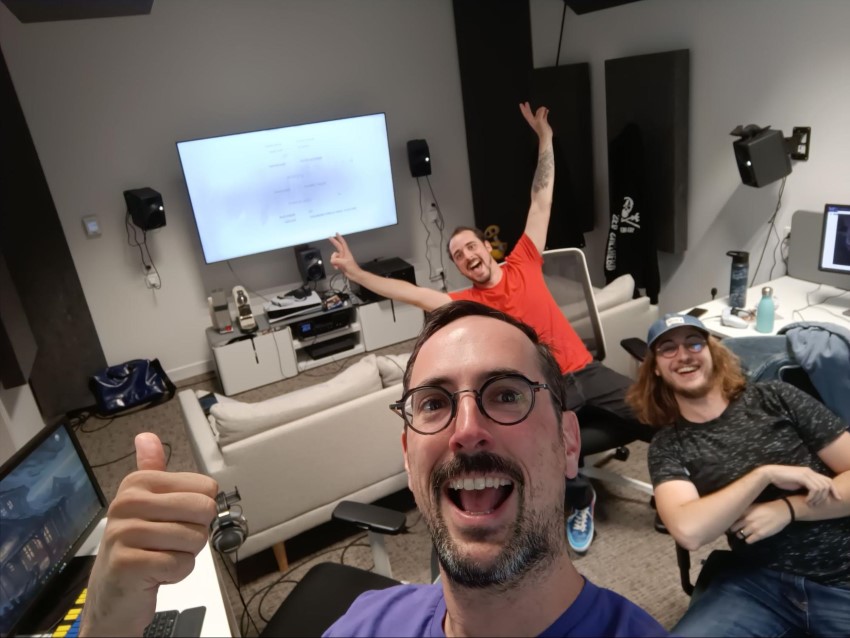
What have you learned while working on Requiem that has helped you to grow as an audio director and/or sound designer?
AP: I would say that the more I work in sound design the more I realize that less is more. We’re often tempted to add more layers, more music, more voiceover, and so on. But, most of the time, I find myself lowering this fader and that fader. Most of the time I’m throwing things away because the game sequence doesn’t need it. If it sounds good and gives you the right emotion, you don’t need to add anything more.
Many people say that limitations help with creativity, and I agree.
Even with sounds recorded 20 years ago, if you’re still using those same sounds, for me, that’s not a problem. It’s how you use the sound, when you use it, and why you use it. A sound can have different meanings depending on how it’s used. Many people say that limitations help with creativity, and I agree. For instance, with Wwise, we’re using the same EQ and the same processors we’ve been using for 10 years. And I’m happy about that. I know them by heart. I know how to get what I want from these tools. Of course, I’m really happy with the new features but sometimes it’s overwhelming to try to learn all the new tools. I try to achieve great sound with simple tools. Most of the time the simple choice, or the first idea is the best. Many actors will say that the first take is the best, and sometimes I take that kind of approach when I work. If it’s working, it’s working.
We are here to convey emotion and to help the team make this creation.
We are here to convey emotion and to help the team make this creation. I never heard a game designer complain that “These are the same sounds from the same libraries.” It’s not a problem. Even if something is badly recorded – for instance, we did a lot of motion capture and the audio from that was used as a reference (a guide track) for the voice actors – there can be a great performance in there. We had some very good actors doing the mo-cap, and there was noise on the tracks because they were moving around, but I never had one complaint about the sound quality. It wasn’t perfect but it was all about the actors. Sometimes we can focus more on what is working and less on some tiny details.
It’s hard because we’re all overwhelmed with new technologies and new tools to use for the next-gen systems. It’s paradoxical. You need to use new technologies for the next-gen but you need to not lose too much time on that. You need to focus on what’s important for the players at the end of the day.
A big thanks to Aurélien Piters for giving us a behind-the-scenes look at the sound of A Plague Tale: Requiem and to Jennifer Walden for the interview!
 Tesla Model X 2015 electric full size crossover SUV sport utility vehicleKrampfstadt Studio65,00 $32,00 $51% OFF
Tesla Model X 2015 electric full size crossover SUV sport utility vehicleKrampfstadt Studio65,00 $32,00 $51% OFF

